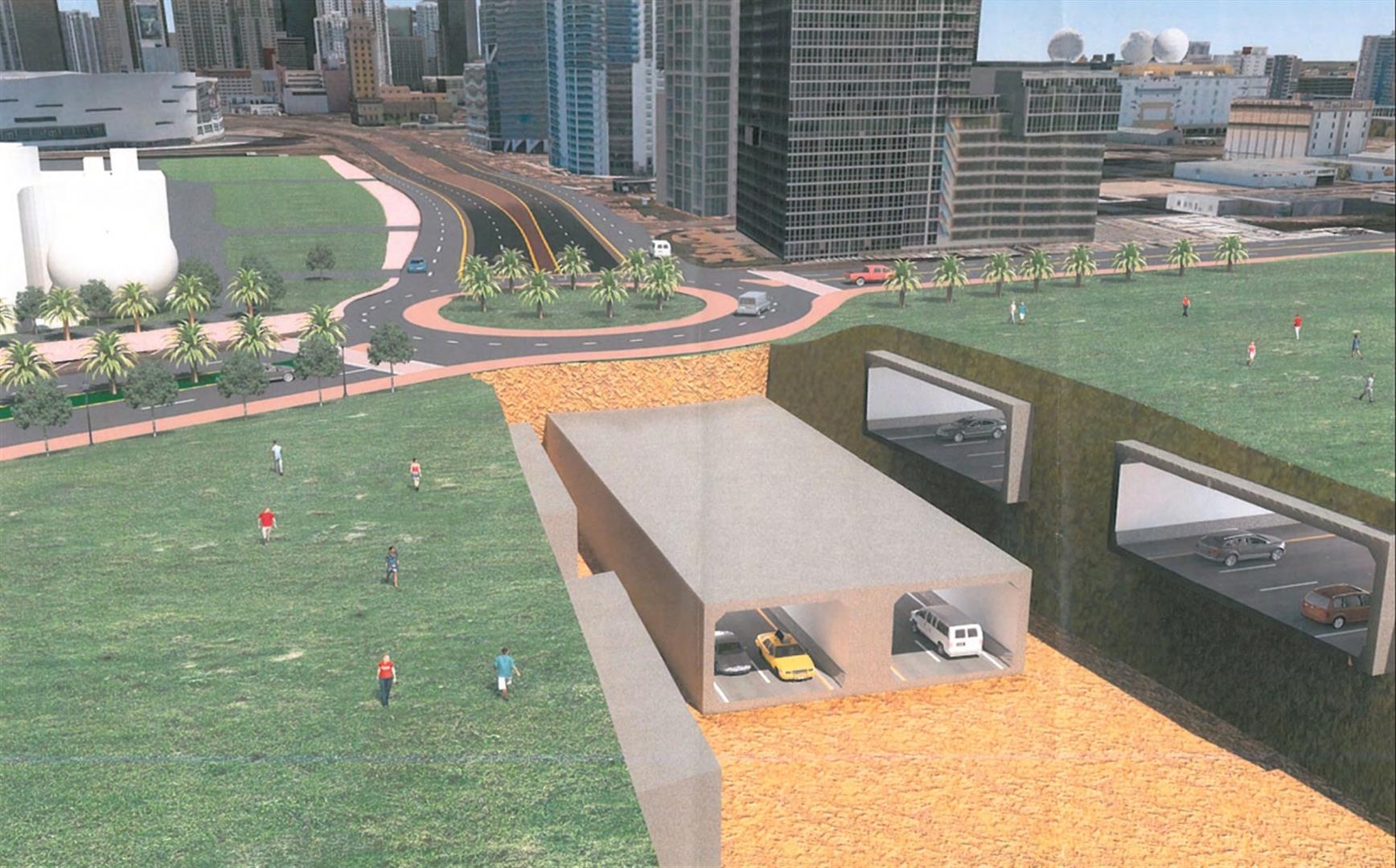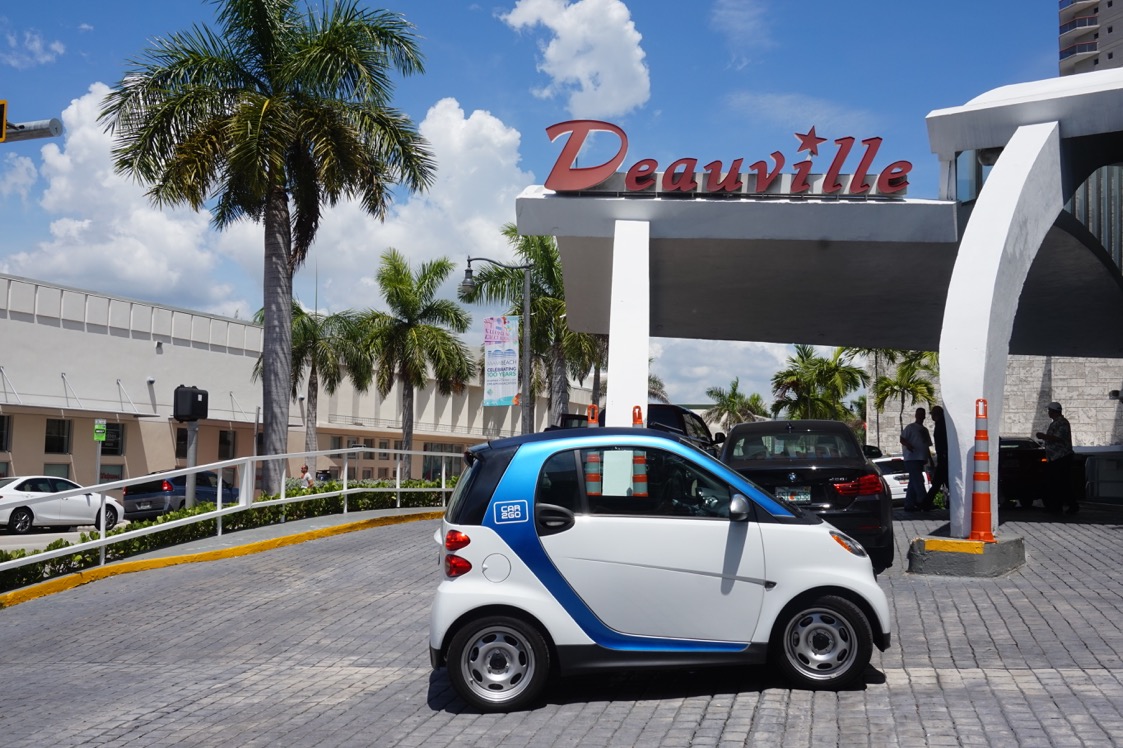An idea that has been floating around for a whilte, to bury both I-395 and Biscayne Boulevard in a part of Downtown Miami, has just gotten the look-over by the Florida Department of Transportation, which prepared a report on the feasability on their version of the plan. That version would only bury a few blocks of I-395, replacing the ‘signature bridge’ which FDOT is currently planning, as well as the bloicks from the northern edge of Museum Park to the opposite side of the Arsht Center, actually widdening Biscayne in front of the park to accomodate extra lanes leading to a local road and traffic circle above.
An idea that has been floating around for a while, to bury both I-395 and Biscayne Boulevard in a part of Downtown Miami, has just gotten the look-over by the Florida Department of Transportation, which prepared a report on the feasibility of their version of the plan. That version would only bury a few blocks of I-395, replacing the ‘signature bridge’ which FDOT is currently planning, as well as the blocks from the northern edge of Museum Park to the opposite side of the Arsht Center, actually widening Biscayne in front of the park to accommodate extra lanes leading to a local road and traffic circle above.
A few blocks of new land, for parks or whatever (the plan does not specify much beyond coloring the area green) would be created over the massive underground interchange. It would also cost $1.3 billion more than building the signature bridge, which is already costing about $600 million. Just three years ago, Mayor Regalado and Commissioner Sarnoff sued FDOT for attempting to swap out the signature bridge plan with something cheaper. FDOT’s Gus Pego will present the study to Miami commissioners next week.
This plan is the evolution of another proposal that has floated around for even longer, and which gained much support from urbanists although it never came to fruition. That plan was just to tunnel I-395, from Biscayne Bay all the way to the interchange with I-95. Such a plan would create multiple blocks of new, developable land, and stitch the city together where it is now divided by the highway overpass. The primary goal behind introducing Biscayne Boulevard’s burial to the scheme was, ironically, supposed to be to enhance the city’s connection with its waterfront.
Absent from much of the discussion is the possibility that they could spend any or or even all of that money on mass transit instead.



